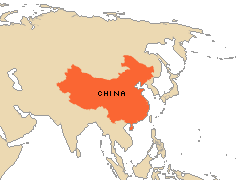
How do we know
Health impact data was provided by a World Bank evaluation and the Implementation Completion Report of the World Bank's Iodine Deficiency Disorders Control Project. Data was drawn from national IDD surveys prepared by the Chinese Research Center for Disease Control, and from analyses by the Chinese Research Center for Endemic Disease Control.Downloads
- Read the entire case study
(PDF | 114 K)
Health Condition: Iodine deficiency - a range of disorders including goiter (enlarged thyroid), stillbirths, stunted growth, thyroid deficiency, and mental defects - affects 13 percent of the world's population, or 740 million people. Iodine deficiency is the leading cause of preventable intellectual impairment in the world and may forfeit as much as 15 percent of a person’s intellectual potential. China bears the heaviest burden of iodine deficiency in the world. In 1995, 20 percent of children aged 8 to 10 showed signs of goiter. Overall, some 400 million people in China were estimated to be at risk of iodine deficiency disorders, constituting 40 percent of the global total.
Intervention or Program: In 1993, China launched the National Iodine Deficiency Disorders Elimination Program to eliminate iodine deficiency, with technical and financial assistance provided through the donor-funded Iodine Deficiency Disorders Control Project. Both the programs have:
- raised awareness of the health impact of iodine deficiency;
- strengthened the capacity of the salt industry to iodize and package salts;
- monitored and enforced the quality of the salt; and
- promoted the compliance among the salt industry through enforcement of licensing regulations and legislation banning non-iodized salt.
Impact: By 1999, iodized salt was reaching 94 percent of the country, up from 80 percent in 1995 - and salt quality had improved markedly. As a result, iodine deficiency has been reduced dramatically. Total goiter rates for children aged 8 to 10 have fallen from 20.4 percent in 1995 to 8.8 percent in 1999.
Cost and Cost-Effectiveness: Fortifying salt with iodine costs approximately 2 to 7 cents per kilogram, or less than 5 percent of the retail price of salt in most countries. The Chinese government invested approximately $152 million.

